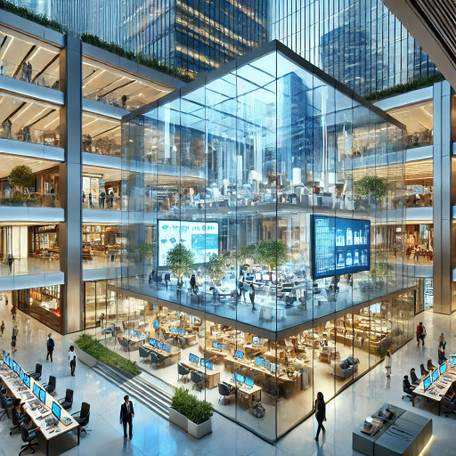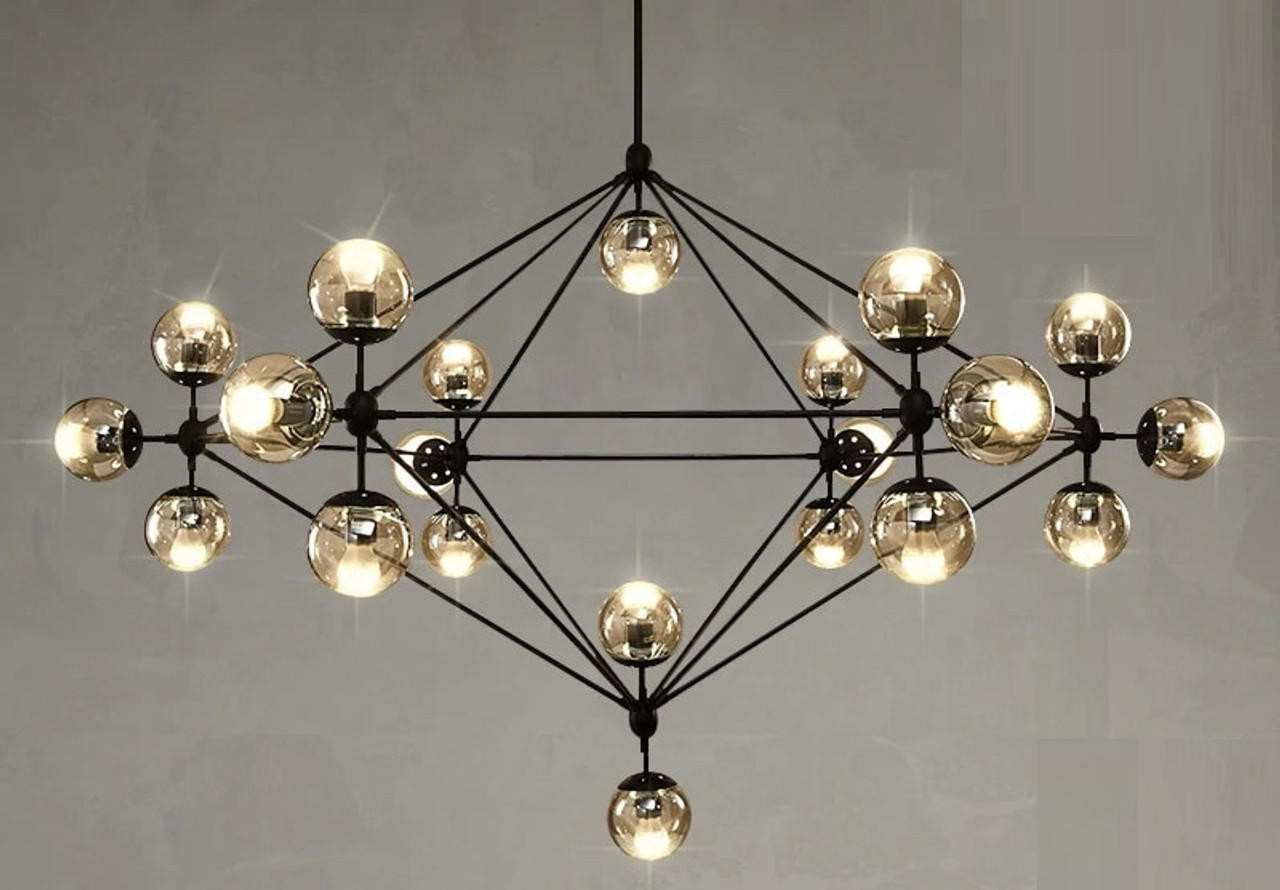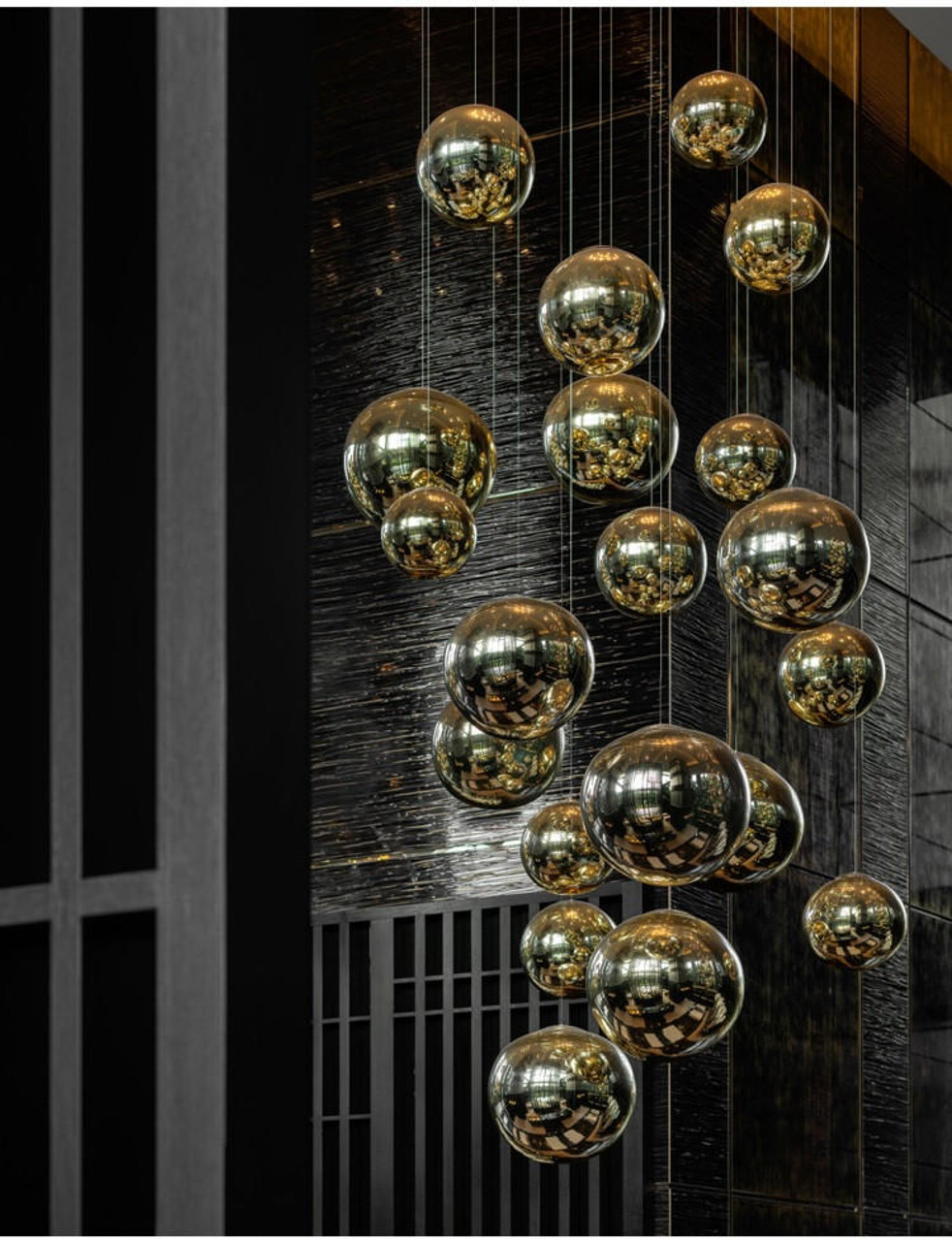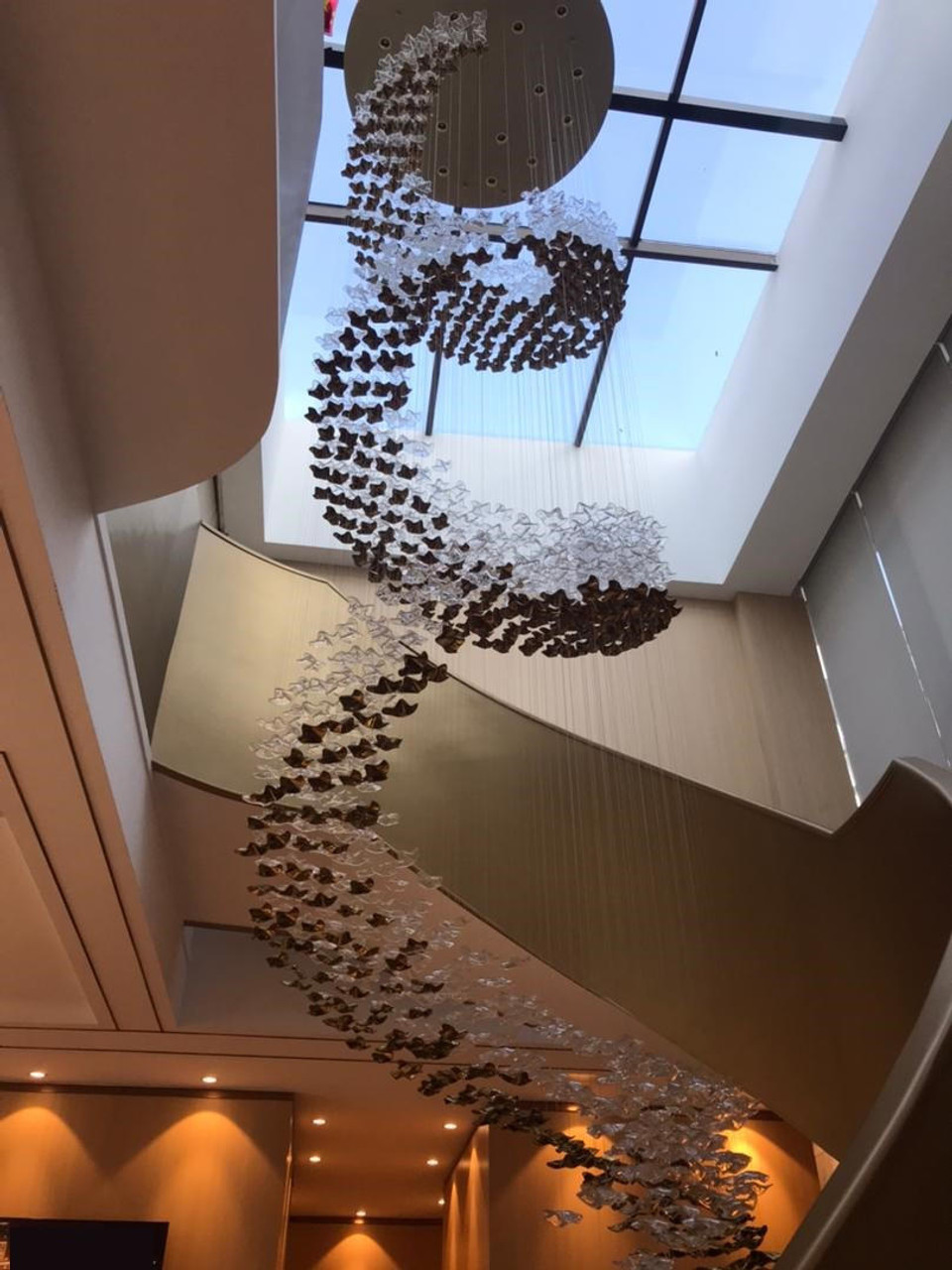Transforming Retail Architecture: 5 Innovative Approaches Architects Are Using to Rethink Consumer Spaces
1st Sep 2024
ransforming Retail Architecture: 5 Innovative Approaches Architects Are Using to Rethink Consumer Spaces
In an era where digital technology is reshaping the retail landscape, the role of physical stores has undergone a dramatic transformation. No longer just places to buy goods, these spaces are now integral to the overall brand experience, serving as platforms for engagement, entertainment, and connection. Architects are at the forefront of this revolution, reimagining retail spaces to meet the demands of modern consumers while creating environments that are as functional as they are inspiring. This blog explores five innovative approaches architects are using to rethink consumer spaces, turning traditional retail on its head.
1. Experiential Retail: Creating Immersive Environments
One of the most significant shifts in retail architecture is the move towards experiential retail. Consumers today crave experiences over transactions, and architects are designing spaces that immerse visitors in the brand's world. These spaces are not just about shopping; they are about storytelling, interaction, and emotional engagement.
Multi-Sensory Design
Experiential retail environments often incorporate multi-sensory elements to create a memorable experience. Architects use lighting, sound, scent, and even temperature to influence the mood and behavior of shoppers. For example, Lush Cosmetics stores are known for their distinctive scents and bright, inviting interiors that encourage exploration and discovery. By appealing to multiple senses, these spaces create a deeper connection between the brand and the consumer.
Interactive Elements
Interactive installations and technology are also crucial components of experiential retail. In Nike’s flagship stores, for example, customers can test products on in-store sports courts or use digital screens to customize their footwear. These interactive experiences not only make the shopping process more engaging but also allow consumers to form a personal connection with the brand.
Case Study: Samsung 837
Samsung 837 in New York City is a prime example of experiential retail. Rather than functioning as a traditional store, it serves as a digital playground where visitors can explore Samsung’s latest innovations through immersive experiences. The space includes a VR theater, interactive art installations, and a café, all designed to foster community and creativity. This approach transforms the retail space into a destination, encouraging repeat visits and deeper brand loyalty.
2. Blurring the Lines: Integrating Retail with Other Functions
Another innovative approach in retail architecture is the integration of retail spaces with other functions, such as dining, entertainment, and coworking. This concept, known as "blended retail," reflects the evolving needs of consumers who seek convenience and value in their shopping experiences.
Retail and Hospitality
The combination of retail and hospitality is becoming increasingly popular. Stores now often include cafes, restaurants, or lounges where customers can relax and socialize. This integration creates a more holistic experience, encouraging customers to spend more time in the space. For instance, the Italian marketplace Eataly combines grocery shopping with dining, offering visitors a chance to taste the products before purchasing them.
Retail and Coworking Spaces
The rise of remote work has led to the emergence of retail spaces that double as coworking environments. Brands like WeWork have explored this trend by incorporating retail elements into their coworking spaces, offering members the convenience of shopping without leaving their work environment. This fusion of retail and workspaces caters to the needs of the modern consumer who values efficiency and flexibility.
Case Study: Starbucks Reserve Roastery
Starbucks Reserve Roastery locations around the world exemplify the integration of retail and hospitality. These sprawling spaces combine coffee shops with retail stores, offering a variety of unique coffee blends and merchandise. Additionally, the roasteries often feature open kitchens and cocktail bars, creating a multifaceted experience that goes beyond just purchasing coffee. The design of these spaces encourages visitors to linger, explore, and immerse themselves in the Starbucks brand.
3. Sustainability and Biophilic Design: Connecting Retail with Nature
As sustainability becomes a priority for both consumers and businesses, architects are increasingly incorporating green practices into retail design. Biophilic design, which integrates natural elements into the built environment, is gaining traction as a way to enhance the shopping experience while promoting environmental responsibility.
Green Architecture
Sustainable retail architecture often involves the use of eco-friendly materials, energy-efficient systems, and innovative waste reduction practices. Buildings may feature solar panels, green roofs, and water-saving technologies, all designed to minimize the environmental impact of the retail space. For instance, Apple’s retail stores are known for their commitment to sustainability, with many locations powered by renewable energy and designed to meet high environmental standards.
Biophilic Design Elements
Biophilic design goes beyond sustainability by fostering a connection between consumers and nature. This approach incorporates natural light, plants, water features, and organic materials to create a calming, restorative environment. Research has shown that biophilic design can reduce stress, improve well-being, and enhance the overall shopping experience.
Case Study: Lululemon’s Store Design
Lululemon, a brand known for its activewear, has embraced biophilic design in its retail spaces. Stores often feature natural materials like wood and stone, abundant greenery, and large windows that flood the space with natural light. This connection to nature aligns with the brand’s focus on health and wellness, creating an environment that resonates with its target audience.
4. Adaptive Reuse: Transforming Existing Structures
In an effort to create unique retail environments and promote sustainability, architects are increasingly turning to adaptive reuse—the practice of repurposing existing buildings for new uses. This approach not only preserves historical architecture but also offers a cost-effective and environmentally friendly alternative to new construction.
Preserving Heritage
Adaptive reuse allows architects to preserve the historical and cultural significance of buildings while giving them new life as retail spaces. This approach can be particularly effective in urban areas where space is limited, and historical structures are abundant. For example, the Coal Drops Yard in London is a former Victorian coal storage facility that has been transformed into a vibrant shopping destination. The design retains the building’s original character while introducing modern elements that cater to contemporary shoppers.
Creative Retail Spaces
Adaptive reuse projects often result in creative and unconventional retail spaces that stand out from typical shopping environments. These spaces can attract customers looking for unique experiences and help brands differentiate themselves in a crowded market. The Ace Hotel in Los Angeles, for instance, transformed a 1920s theater into a boutique hotel with a retail component. The mix of old and new creates a dynamic atmosphere that appeals to both tourists and locals.
Case Study: The High Line Nine
The High Line Nine in New York City is a gallery complex located beneath the High Line, a former elevated railway turned public park. The project repurposed the space under the railway into a series of interconnected art galleries and retail spaces. The High Line Nine is an example of how adaptive reuse can create vibrant, multifunctional spaces that blend retail, art, and community engagement.
5. Technology-Driven Design: Shaping the Future of Retail
As technology continues to evolve, it plays an increasingly important role in retail architecture. From smart store layouts to virtual and augmented reality, architects are leveraging technology to create more efficient, personalized, and immersive shopping experiences.
Smart Retail Spaces
Smart retail spaces use technology to optimize the shopping experience. This includes the use of sensors and data analytics to monitor foot traffic, adjust lighting and temperature, and manage inventory. By gathering and analyzing data in real-time, retailers can make informed decisions that enhance customer satisfaction and streamline operations.
Virtual and Augmented Reality
Virtual and augmented reality (VR and AR) are becoming valuable tools in retail design. These technologies allow customers to visualize products in their own homes or try on clothing virtually, bridging the gap between online and in-store shopping. For instance, IKEA’s AR app enables customers to see how furniture would look in their space before making a purchase, reducing the need for physical store visits and enhancing the convenience of shopping from home.
Case Study: Alibaba’s Futuremart
Alibaba’s Futuremart in Hangzhou, China, is a prime example of a technology-driven retail space. The store is equipped with facial recognition technology, allowing customers to make purchases without the need for cash or cards. The space also features smart mirrors that recommend products based on customer preferences and behavior. This integration of technology creates a seamless, personalized shopping experience that represents the future of retail.
The Impact of These Innovations on Consumer Behavior
The innovative approaches discussed above are not just reshaping the design of retail spaces; they are also having a profound impact on consumer behavior. As retail spaces become more experiential, integrated, sustainable, and technology-driven, consumers are changing the way they shop, interact with brands, and make purchasing decisions.
Increased Engagement and Loyalty
Experiential and technology-driven retail spaces are designed to create a deeper connection between consumers and brands. By offering unique experiences and personalized services, these spaces encourage repeat visits and foster brand loyalty. Consumers are more likely to return to a store that offers them more than just a transactional experience, whether it's the chance to customize a product, participate in an event, or simply enjoy a beautifully designed space.
Greater Emphasis on Sustainability
As more retail spaces adopt sustainable and biophilic design practices, consumers are becoming more aware of the environmental impact of their shopping choices. This awareness is driving demand for eco-friendly products and ethical brands, influencing the types of stores that consumers choose to support. Retailers that prioritize sustainability in their store design are likely to attract environmentally conscious consumers who are looking to align their shopping habits with their values.
The Role of Convenience in Retail
The integration of retail with other functions, such as dining, coworking, and entertainment, reflects the growing importance of convenience in consumer behavior. Shoppers are increasingly looking for spaces that offer multiple services under one roof, allowing them to combine activities like shopping, dining, and working into a single trip. Retailers that can provide this level of convenience are well-positioned to meet the needs of today’s time-pressed consumers.
The Future of Brick-and-Mortar Stores
Despite the rise of e-commerce, brick-and-mortar stores are far fromextinct. Instead, they are evolving into dynamic, multi-functional spaces that offer experiences that cannot be replicated online. The innovative approaches being used by architects to transform retail spaces are helping to ensure the continued relevance of physical stores in a digital age. By creating environments that engage the senses, foster community, and integrate technology, architects are helping retailers adapt to changing consumer expectations and remain competitive in a rapidly evolving market.
Conclusion
The transformation of retail architecture is a testament to the power of innovation in the face of change. As consumer expectations continue to evolve, architects are playing a crucial role in redefining what retail spaces can be. From creating immersive, experiential environments to integrating retail with other functions, embracing sustainability, repurposing existing structures, and leveraging technology, architects are at the forefront of a retail revolution. These innovative approaches are not only reshaping the physical spaces where we shop but also influencing the way we interact with brands and make purchasing decisions.
As we look to the future, it is clear that the physical retail space will continue to play an essential role in the overall shopping experience. However, the success of these spaces will depend on their ability to adapt and innovate in response to changing consumer needs and technological advancements. Architects, with their unique ability to blend form and function, will be key to guiding this evolution, ensuring that retail spaces remain vibrant, relevant, and engaging for years to come.
By understanding and embracing these five innovative approaches, retailers can create spaces that not only attract customers but also keep them coming back. The future of retail is not just about selling products; it's about creating experiences, building communities, and connecting with consumers in meaningful ways. Through thoughtful design and a willingness to embrace change, the retail industry can continue to thrive in an increasingly digital world.








